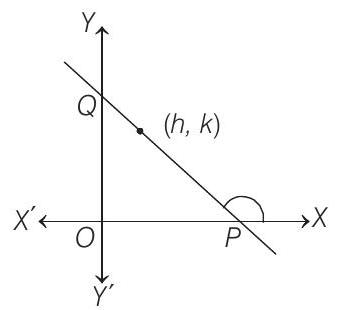Application of Derivatives 4 Question 47
49. Let
(1995, 5M)
Show Answer
Answer:
Correct Answer: 49.
Solution:
- Let equation of any line through the point
For this line to intersect the positive direction of two axes,

The line (i) meets
Let
To obtain minimum value of
[given]
Therefore,
Now,
Therefore,






